Music is sound arranged into pleasing or interesting patterns. It forms an important part of many cultural and social activities. People use music to express feelings and ideas. Music also serves to entertain and relax.
Loading the player...Mexican mariachi music
Music is a performing art. It differs from such arts as painting and poetry, in which artists create works and then display or publish them. Musical composers need musicians to interpret and perform their works, just as playwrights need actors to perform their plays. Thus, most musical performances are really partnerships between composers and performers.
Music also plays a major role in other arts. Opera combines singing and orchestra music with drama. Ballet and other forms of dancing need music to help the dancers with their steps. Motion pictures and TV dramas use music to help set the mood and emphasize the action. Also, composers have set many poems to music.
Music is one of the oldest arts. People probably started to sing as soon as language developed. Hunting tools struck together may have been the first musical instruments. By about 35,000 B.C., people had discovered how to make flutes out of hollow bones. Many ancient peoples, including the Egyptians, Chinese, and Babylonians, used music in court and religious ceremonies. The first written music dates from about 2500 B.C.
Today, the music of Europe and the Americas is known as Western music. There are two chief kinds of Western music, classical and popular. Classical music includes symphonies, operas, ballets, and chamber music, music for small ensembles (groups of instruments). Popular music includes country, folk, hip-hop, jazz, and rock music. The cultures of Africa and Asia have developed their own types of classical and popular music.
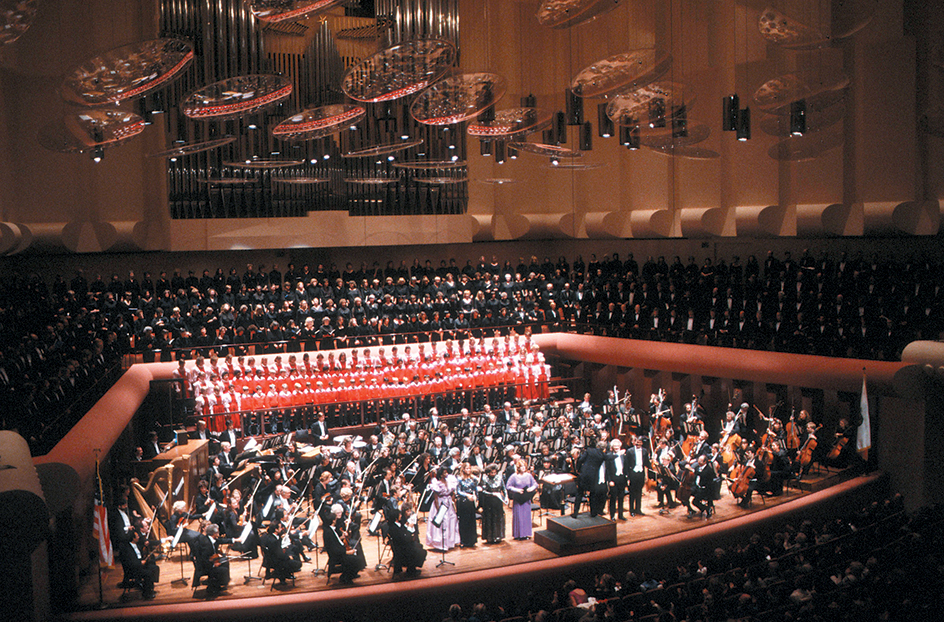
The importance of music
Music plays an important part in all cultures. People use music (1) in ceremonies, (2) in work, and (3) in personal and social activities.
In ceremonies.
Nearly all peoples use music in their religious services. One kind of religious music seeks to create a state of mystery and awe. For example, some cultures have special musical instruments played only by priests on important occasions, such as harvest ceremonies and the burials of chiefs. Similarly, much Western church music attempts to create a feeling of distance from the daily world. Other religious music helps produce a sense of participation among worshipers. The singing of hymns by a congregation is a good example of this function of religious music.
Loading the player...Medieval music: Gregorian chant
Many nonreligious ceremonies and spectacles also use music. They include sports events, graduations, circuses, parades, and the crownings of kings and queens.
In work.
Before machines became important, people had to do much difficult or boring work by hand. Laborers sang songs to help make their work seem easier. For example, crews aboard sailing ships sang chanteys, songs with a strong, regular beat. The sailors pulled or lifted heavy loads in time to the beat. Today, the wide use of machines has made work songs rare in industrialized societies. However, many offices and factories provide background music for workers, and many people listen to music on headphones as they work.
In personal and social activities.
Many people perform music for their own satisfaction. Singing in a chorus or playing a musical instrument in a band or orchestra can be enjoyable. Music provides people with a way to express their feelings. A group of happy campers may sing cheerful songs as they sit around a campfire. A sad person may play a mournful tune on a guitar.
People use music at a variety of social occasions. At parties and dinners, music often is played for dancing or simply for listening. In some countries, a man shows that a woman is special to him by serenading her or by sending musicians to play and sing for her.
Musical instruments
A musical sound, called a tone, is produced when air vibrates a certain number of times each second. These vibrations are called sound waves. Sound waves must be contained in some way so that the performer can control the pitch, loudness, duration, and quality of the tone. Whatever contains the sound waves must also provide resonance—that is, it must amplify and prolong the sound so the tone can be heard.
The vocal cords produce musical sounds in the human voice. These two small folds of tissue vibrate and create sound waves when air passes them from the lungs. The throat and the cavities in the head provide the resonance needed for singing.
Most musical instruments have a string, a reed (thin piece of wood or metal), or some other device that creates sound waves when set in motion. Musical instruments can be grouped in five major classes. These classes are (1) stringed instruments, (2) wind instruments, (3) percussion instruments, (4) keyboard instruments, and (5) electronic instruments.
Musical instruments have evolved throughout history. For example, 200 years ago, brass instruments did not have valves, and woodwind instruments had few keys. Such features were added to modernize the instruments and to make them easier to play. As a result, the tone quality of the instruments also changed. In the late 1900’s, many instruments were restored or built on original models so that the music of early composers can sound as originally intended.
Stringed instruments
produce tones when the player makes one or more strings vibrate. There are two basic types of stringed instruments: (1) bowed stringed instruments and (2) plucked stringed instruments.
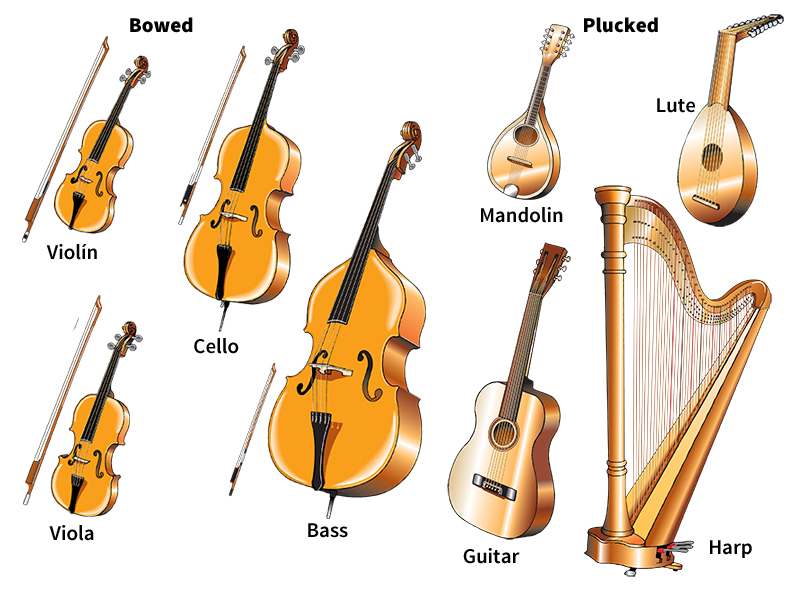
Bowed stringed instruments
are played by drawing a bow back and forth across the strings. The pressure of the bow on the strings produces vibrations that are amplified by the body of the instrument. Most bowed instruments have four strings. Each of the strings is tuned to a different pitch. To produce other pitches, the musician shortens the strings by pressing down on them with the fingers.
Loading the player...Violin
The main bowed instruments, in descending order of pitch and ascending order of size, are the violin, viola, violoncello or cello, and string bass. These instruments form the heart of a symphony orchestra. Violins in an orchestra are divided into first violins and second violins. The first violins play higher-pitched parts of musical compositions than the second violins.
Plucked stringed instruments
are played by plucking the strings with the fingers or a pick. The guitar is the most common plucked stringed instrument. It has 6 to 12 strings. The harp, another important plucked instrument, has up to 47 strings. It produces the most tones of any stringed instrument. Other plucked stringed instruments include the banjo, lute, lyre, mandolin, sitar, ukulele, and zither. The strings of the violin and other bowed instruments also may be plucked to produce special effects. This style of playing on a bowed instrument is called pizzicato.
Loading the player...Guitar manufacturing
Wind instruments
are played by blowing into or through a tube. There are two chief types. They are (1) woodwind instruments and (2) brass instruments.
All woodwind instruments except the saxophone at one time were made of wood. Today, many are made of metal or other materials. In such woodwinds as recorders, the player blows through a mouthpiece into the instrument. In other woodwinds, such as flutes, the player blows across a hole in the instrument. Other woodwinds, called reed instruments, have one or two reeds attached to the mouthpiece. The reeds vibrate when the musician blows on them. The clarinet and saxophone are the chief single-reed instruments. Double-reed instruments include the bassoon, English horn, and oboe.
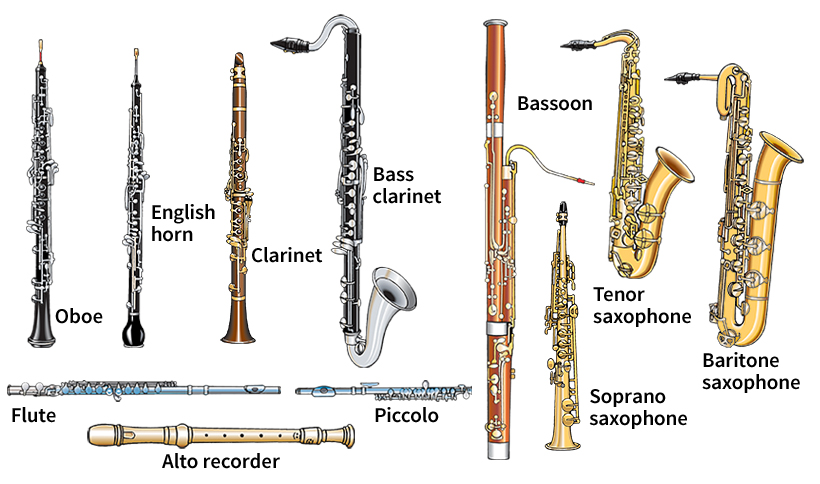
The player controls the pitch by placing the fingers on holes in the instrument or on keys that cover holes. In this way, the player lengthens or shortens the column of air that vibrates inside the instrument. The piccolo and flute have the highest pitches of woodwinds, and the bassoon and contra bassoon, the lowest.
Loading the player...Oboe
Brass instruments are played in a different way from that of woodwinds. A player holds his or her lips against the instrument’s cup-shaped mouthpiece. The lips vibrate like vocal cords, or reeds in reed instruments, when the player blows. By either tensing or relaxing the lips, the player produces different pitches. With most brass instruments, the player can further control the pitch with valves or slides that lengthen or shorten the tube through which the air is blown.
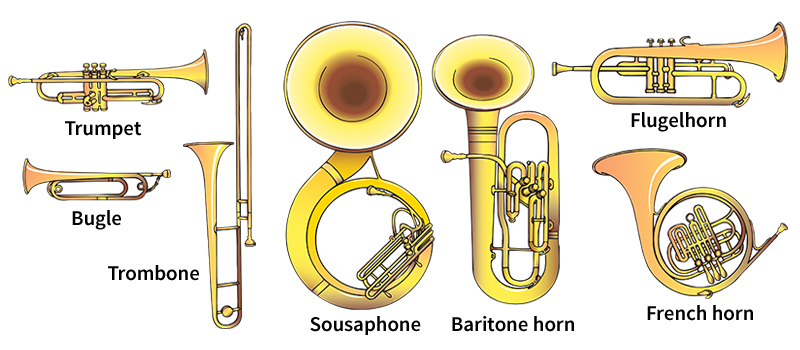
The chief brass instruments in an orchestra are the French horn, trumpet, trombone, and tuba. The French horn and trumpet have high pitches, and the trombone and tuba have lower pitches. The trombone has a slide instead of valves. The performer pulls the slide back and forth to control the pitch of the instrument. Other brass instruments, including the baritone horn, cornet, euphonium, and sousaphone, are used in bands.
Percussion instruments
are shaken, clapped, or hit with a stick or a mallet. Drums are the most common percussion instruments. Most Western drums do not produce a range of pitches. But kettledrums, also called timpani, can be tuned to various pitches by adjusting the tension of the drumheads. Glockenspiels, marimbas, vibraphones, and xylophones have a series of bars that produce a range of pitches. Other percussion instruments include castanets, cymbals, gongs, and tambourines.
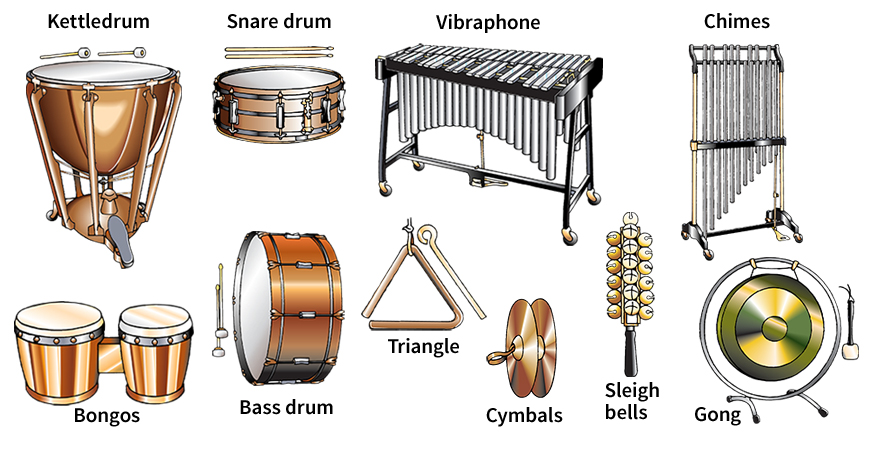
Keyboard instruments
have a series of keys connected with a device that produces tones. The musician presses the keys to make sounds. The most popular acoustic (nonelectronic) keyboard instruments are the piano, harpsichord, and pipe organ. The keys on a piano activate small hammers that strike strings. On a harpsichord, the keys control a mechanism that plucks strings. Pressing a key on a pipe organ opens a pipe through which a column of air vibrates. The player operates some pipes by pressing pedals with the feet.
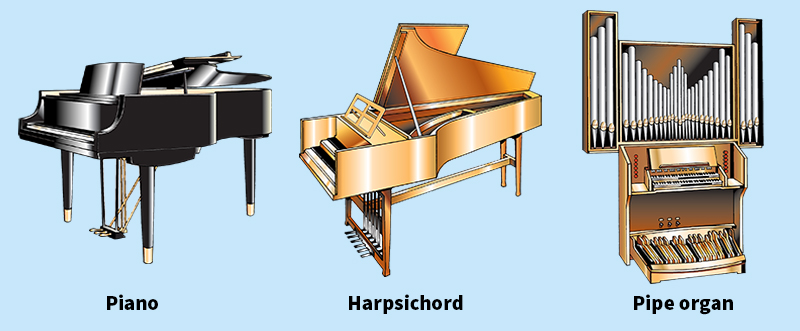
Electronic instruments
include those that generate sounds electrically and those that electronically amplify sounds produced by an instrument. The most common electronic instrument is the electric guitar. It makes louder and more varied tones than an ordinary guitar. Electric guitars, electric pianos, and electronic organs are widely used in rock music. An electronic instrument called a synthesizer is used to create original sounds or to imitate the sounds of other musical instruments. Most synthesizers operate using a computer equipped with a system called MIDI (musical instrument digital interface).
Loading the player...Classical electronic music
The elements of music
A composer uses five basic elements to create a piece of music. These elements are (1) tone, (2) rhythm, (3) melody, (4) harmony, and (5) tone color.
Tone
is any musical sound of definite pitch. Most music is based on a scale, a particular set of tones arranged according to rising or falling pitch. Western musicians name the tones, or notes, of a scale with the first seven letters of the alphabet—A, B, C, D, E, F, and G. The letters are repeated every eight notes. The distance between a note and the next highest note with the same name, such as C to C, is called an octave. The higher note of an octave has twice as many vibrations per second as the lower note, and the two notes sound similar. A note may be raised or lowered slightly in pitch to produce a tone halfway between it and the note next to it. The half tone above a note is called its sharp, and the half tone below a note is called its flat. See Tone.
The notes in a scale are separated by half steps or whole steps. In most Western music, a half step is the shortest distance between two notes. The distance between a note and its sharp or flat is a half step. A whole step equals two half steps—the distance from C to D or from D to E, for example. The steps in a scale are commonly called scale degrees.
Most Western composers have based their music on diatonic scales. A diatonic scale has eight notes to an octave arranged in a pattern of half steps and whole steps. There are two main types of diatonic scales, major scales and minor scales. The scales differ in the location of the half steps. A major scale has a half step between its third and fourth degrees and between its seventh and eighth degrees. Thus, the notes of a major scale are arranged in this order: two whole steps, one half step, three whole steps, and one half step. The natural minor scale follows a pattern of one whole step, one half step, two whole steps, one half step, and two whole steps. Two other minor scales, the harmonic minor scale and the melodic minor scale, follow other patterns of steps. However, all minor scales have a half step between the second and third degrees of the scale.
The notes of a diatonic scale vary in importance. The main note, called the tonic, is the first degree of the scale. The tonic serves as the tonal center of the scale, and all other notes are related in some way to the tonic. The tonic also gives the scale its name. For example, C is the tonic in the C major and C minor scales.
Other than the tonic, the most important notes of a scale are the fifth degree, called the dominant, and the fourth degree, called the subdominant. The seventh degree is called the leading tone because it leads to the tonic at the octave.
A chromatic scale consists entirely of half steps. It has 12 notes to an octave, rather than 8. You can hear the chromatic scale if you play all the white and black keys from one C to the next C on a piano. After 1850, composers increasingly used notes from the chromatic scale to make their music more colorful. During the 1920’s, the Austrian composer Arnold Schoenberg developed a type of music based on this scale. This music, called 12-tone music, has no tonal center.
Rhythm
is the way the composer arranges notes in time. Every note has a certain duration as well as a definite pitch. Some notes may last a short time, and others a relatively long time. Rhythm helps give music its character. For example, a familiar piece of music sounds much different if the music is performed with all its notes the same length. The piece of music sounds strange because it lacks the variety of the short and long notes that make up its normal rhythm. See Rhythm.
Another important element of rhythm is accent. An accented note is a stressed (emphasized) note. Most composers build their music on a pattern of regularly occurring accents. Certain types of music have a fixed pattern of accent. For example, a waltz follows a strong-weak-weak pattern, ONE two three ONE two three. A march has a strong-weak pattern, ONE two ONE two.
Some composers create different rhythms by accenting beats that are normally unaccented. This technique, known as syncopation, has been widely used in jazz and ragtime music.
Melody.
The composer combines pitches and rhythms to create a melody, or tune. The American composer Aaron Copland said, “Melody is what the piece is about.” When we hear a piece of music, we most often remember its melody.
Some short pieces of music have only one melody. Longer pieces may consist of different melodies to give the music contrast and variety. A melody repeated throughout a composition is called a theme. Composers often use a part of a melody or theme to develop musical ideas. Such a part is called a motive. The first four notes of the German composer Ludwig van Beethoven’s fifth symphony form a motive. By repeating and varying these four notes, Beethoven developed a theme that recurs through the entire symphony.
Loading the player...Symphony No. 5 by Beethoven
Harmony.
Most Western music is based on the idea of sounding notes together. The sounding together of several notes is called harmony. See Harmony.
Harmony involves the use of various intervals (distances between notes) in a scale. Intervals are named according to the number of scale degrees they cover in a major scale. For example, an interval from A to C covers three scale degrees—A, B, and C—and is called a third. An interval spanning five scale degrees, such as A to E or C to G, is a fifth. Fourths, fifths, and eighths are called perfect intervals. Seconds, thirds, sixths, and sevenths can be either major intervals or minor intervals. Perfect intervals and major intervals can be augmented (raised a half step). Perfect intervals and minor intervals can be diminished (lowered a half step).
Composers use intervals to create chords—combinations of three or more notes sounded at the same time. Chords may be built on any note. The most common type of chord is the triad, which consists of three tones, each a third apart. For example, a chord that consists of the notes C, E, and G is a major triad. A chord with the notes C, E flat, and G is a minor triad.
The tonic triad, or tonic chord, is the most important chord in a piece of music. It is built on the tonic note of the scale. The second most important chord is the dominant chord, and the third is the subdominant chord. The dominant chord is built on the fifth note of the scale, and the subdominant chord on the fourth. In the C major scale, the tonic chord is formed by C, E, and G; the dominant chord by G, B, and D; and the subdominant chord by F, A, and C. Any note in the diatonic scale can be harmonized with one of the chords—the tonic, dominant, or subdominant.
Most Western composers use a harmonic system based on the tonic and dominant tones of the scale. The composer fixes the tonic tone and thus a specific key (tonal center) firmly in the listener’s mind. The composer may then modulate (shift) from one key to another by adding sharps or flats to the music. Generally, these sharps or flats prepare the dominant or tonic of the new key. Modulation adds variety and may emphasize a contrasting section of a work. In most cases, the composer eventually returns to the original key.
Another important element of harmony is cadence. Cadence is a succession of chords that end a musical work or one of its sections. Most pieces of classical music end with an authentic cadence, which consists of a dominant chord followed by a tonic chord. A plagal cadence consists of a subdominant chord followed by a tonic chord. The “Amen” ending of a hymn is an example of a plagal cadence.
Harmony has been a part of Western music for more than 1,000 years. However, Western composers’ ideas about harmony have changed considerably over the centuries, particularly their ideas about consonance and dissonance. Harmony that sounds smooth and pleasant is consonant. Harmony that sounds rough and unpleasant is dissonant. Consonance and dissonance are determined partly by cultural standards. Music that sounds consonant to people of one culture may sound dissonant to people of another culture.
Composers use harmony chiefly for music that has a melody and accompaniment. Some musical compositions consist of two or more melodies played at the same time. This form of music is called counterpoint.
Loading the player...Renaissance music: Franco-Flemish
Tone color,
also called timbre, is the quality of a musical sound. Tone colors produced by different musical instruments vary widely. For example, a melody that seems dark and mournful when played on the English horn may sound bright and merry when played on the flute. Composers take advantage of tone color in orchestration (writing or arranging music for a musical group). They combine tone colors much as an artist puts together colors in creating a painting.
Musical notation
Over the years, composers developed a system for writing down music so it could be performed by musicians. This system is called notation. Notation indicates (1) the pitch of tones; (2) the time values, or duration of the tones; and (3) expression—that is, the composer’s ideas about how the music should be performed.
Indicating pitch.
Composers use staff notation to express pitch. In this system, signs called notes represent tones. The notes appear on a staff, which consists of five horizontal lines and the four intervening spaces. Each line and space represents a certain pitch. Short ledger lines indicate pitches above or below the staff. See Pitch.
A clef sign at the left end of the staff determines the names of each line and space. Most music is written in either treble clef or bass clef. High notes, such as those for the violin and flute, appear in treble clef. This clef is often called the G clef. It fixes the G above middle C (the C nearest the middle of the piano keyboard) on the second line from the bottom of the staff. Lower notes appear in bass clef, also called F clef. The bass clef fixes the F below middle C on the second line from the top of the staff. Clef comes from clavis, the Latin word for key.
Composers use both treble clef and bass clef for piano and harp music. The C clef is used in music for the viola, and sometimes in music for the bassoon, cello, and trombone. This clef fixes middle C in a position that minimizes the number of ledger lines.
A key signature appears at the right of the clef sign. It consists of sharp signs or flat signs that indicate which notes should always be played sharp or flat. Each key signature can indicate either of two keys—one major key and one minor key. For example, two sharps can mean the key of either D major or B minor.
The composer may show a change from the key signature by placing an accidental in front of a note. An accidental is the sign for a sharp, a flat, or a natural. Any note not marked by a sharp or a flat is a natural. The natural sign cancels a sharp or a flat.
Indicating time values.
Staff notation enables composers to indicate how long each note should be held. The whole note has the longest time value of any note normally used. The second longest note is the half note, then the quarter note, the eighth note, the sixteenth note, the thirty-second note, and so on. Each time value is divided by two to find the next smallest note value.
The shape of a note shows its time value. Whole notes and half notes have an open oval shape. Notes with shorter values have solid oval shapes. All notes except whole notes have stems. To indicate notes with shorter values than the quarter note, composers attach flags to the stems. An eighth note has one flag; a sixteenth note, two flags; and a thirty-second note, three flags. In a series of short notes, the composer connects the note stems with beams instead of attaching a flag to each stem.
A dot at the right of a note increases its duration by half. For example, a dotted half note equals a half note plus a quarter note. Duration may also be increased by a tie, a curved line that connects consecutive notes of the same pitch. The total duration of tied notes equals that of the notes combined.
Periods of silence are an important part of a piece of music. The composer uses markings called rests to indicate silence in music. The various shapes of rests indicate their time values. A composer groups the notes and rests in a piece of music into units of time called measures or bars. The composer uses bar lines to separate measures on the staff. The way beats are grouped in measures is called the meter.
Meter is indicated by the time signature, a set of numbers, written or printed one above the other, that appears at the beginning of a piece of music. The top number of the set tells the number of beats in a measure. The bottom number of the set tells what kind of note—half, quarter, or eighth—receives one beat. Music with a 2/4 meter, for example, has two beats to a measure and a quarter note as the beat unit. One measure of 2/4 may have a half note, two quarter notes, four eighth notes, or some other combination totaling two beats. A 4/4 meter, sometimes written as C, has four quarter notes to a measure. Other commonly used meters are 3/4 and 6/8.
Many modern composers create irregular rhythms by changing the time signature several times during a piece of music. These composers also may use unusual time signatures, such as 5/4 or 11/16.
Another important element of time in music is tempo (overall speed of the music). The tempo tells how slowly or quickly the beat unit should be played. Composers sometimes show tempo by a metronome mark, which indicates the number of beats per minute. The musician can then follow the tempo by using a metronome, a timekeeping device that can be adjusted to tick off each beat. Composers also may use certain Italian words to indicate tempo. For example, the word adagio means slowly, and the word allegro means fast. These Italian words are used because Italian musicians had the greatest influence in Europe during the 1600’s and 1700’s, when composers first used words to indicate tempo.
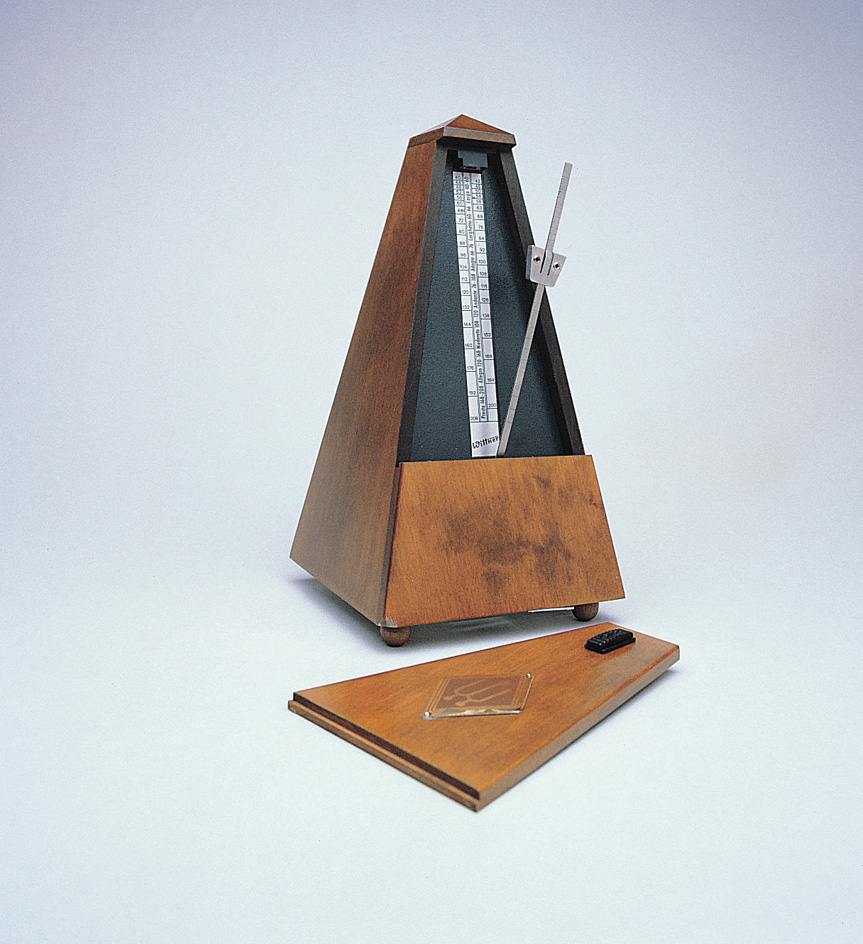
Indicating expression.
To affect a listener’s feelings, music must be expressive. Composers use various words and symbols to indicate the kind of expression they want in a piece of music.
Some directions indicate articulation—that is, how a series of notes should be connected. A curved line over or under notes means that the notes should be connected smoothly. This style of playing is called legato. A dot over or under notes indicates that they should be played as short notes with silence between them. Musicians call this type of articulation staccato.
Composers use certain Italian words or their abbreviations to indicate dynamics (loudness or softness). For example, the word pianissimo (or pp) means very soft, and the word fortissimo (or ff) means very loud. Other directions, also in Italian, concern the emotional quality of the music. For example, dolce means sweetly, and cantabile means songlike.
Music around the world
Western music
is the music of people of European ancestry. It is the major form of music in Europe, North America, South America, and Australia. Western music can be divided into three main types: (1) classical music, (2) popular music, and (3) folk music.
Classical music,
also called art music, is composed according to certain rules and usually performed by musicians from written music. It includes symphonies and music for opera and ballet.
Classical composers have written different styles of music during different periods of history. For example, most classical music composed in the late 1700’s stresses simplicity and elegance. But much classical music of the late 1800’s is highly imaginative and emotional. Music written by great classical composers of the past still provides much enjoyment today. See Classical music.
Popular music
includes many kinds of music, such as country music, jazz, rock music, and music from musical comedies and motion pictures. Popular music, or entertainment music, is generally much simpler than classical music. However, some pieces written as popular music hundreds of years ago are performed as classical music today. In addition, many great classical composers wrote some tunes in the style of the popular music of their time. Thus, the line between popular and classical music is flexible, not hard and fast. See Popular music.
Country music is derived from the folk music of rural people of the southern United States and other American traditional music. Performers often play country music from memory or improvise (play spontaneous variations) from an existing song. See Country music.
Jazz first became popular about 1900 among African Americans of the southern United States. It combines the complex rhythms of African music and the harmony of Western music. Jazz musicians have experimented with many kinds of instruments and styles. Most jazz features much improvisation. See Jazz.
Rock music combines blues, country music, jazz, and American and European entertainment music. Rock music styles often change, but such music always has a strong beat and a simple melody and rhythm. See Rock music.
Rap music is highly rhythmic. There is little melody. Performers speak or chant rhymed words, accompanied by other sounds that emphasize rhythm. Many rap songs focus on social issues. See Rap music.
Salsa is melodic Latin American dance music. It has repeated rhythms and usually is played fast. It is more similar to jazz than traditional Latin American music.
Folk music
consists of the traditional songs of a people. Most folk songs begin in rural communities. One person makes up a song, and other people hear it and learn to sing it. Some folk songs have been passed on in this way for hundreds of years. Such classical composers as Edvard Grieg of Norway and Antonín Dvorák of what is now the Czech Republic used folk music in their works. See Folk music.
Loading the player...Belgian folk song
Asian music
sounds different from Western music because the scales, instruments, and composing techniques used are different. For example, a scale in Western music has 12 steps to an octave. But the Arab scale has 17 steps to an octave, and the Indian scale has 22 steps. Such scales are called microtonal because they are made up of microtones (intervals smaller than a half step). The chief types of Asian music are those of (1) China, (2) Japan, (3) India, (4) the Arab countries, and (5) Indonesia.
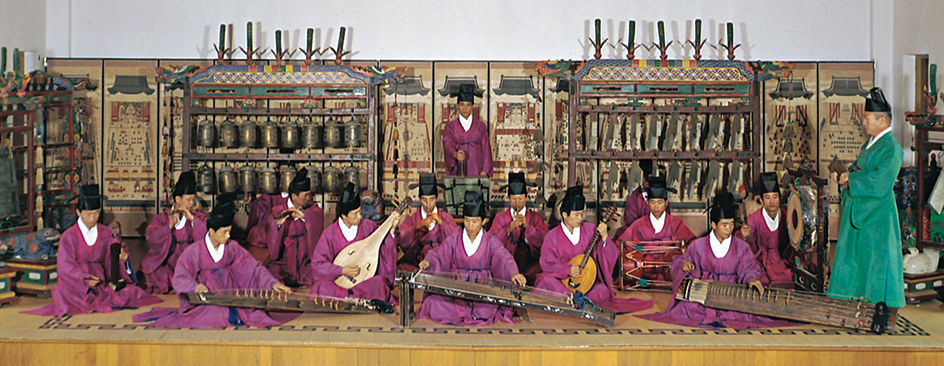
Chinese music
played an important role in ritual dances and songs at least 3,000 years ago. Orchestras with hundreds of musicians performed at early Chinese religious ceremonies and court festivities. Today, all Chinese plays are set to music. Beijing opera, also called Peking opera, is the most popular form of Chinese drama. It combines dialogue, music, dancing, and acrobatics.
Loading the player...Chinese ancient ceremonial music
Chinese musical instruments include the qin and the pipa, two plucked stringed instruments. Chinese musicians also play bowed stringed instruments, flutes, and percussion instruments, especially bells, drums, and gongs. The basic scale of Chinese music has five notes, most commonly F, G, A, C, and D. Traditional Chinese music has no harmony based on chords.
Japanese music
was influenced by the court music of China. Japanese court music, called gagaku, dates from the A.D. 700’s. Japanese orchestras consist of shakuhachi (bamboo flutes), gongs, drums, and such plucked stringed instruments as the samisen and the koto.
Loading the player...Japanese folk song
Music is an essential part of Japanese theater. The noh play, a form of Japanese drama developed in the 1300’s, features solo and choral singing with accompaniment by a small orchestra. A large orchestra provides background music for the kabuki, a dance-drama.
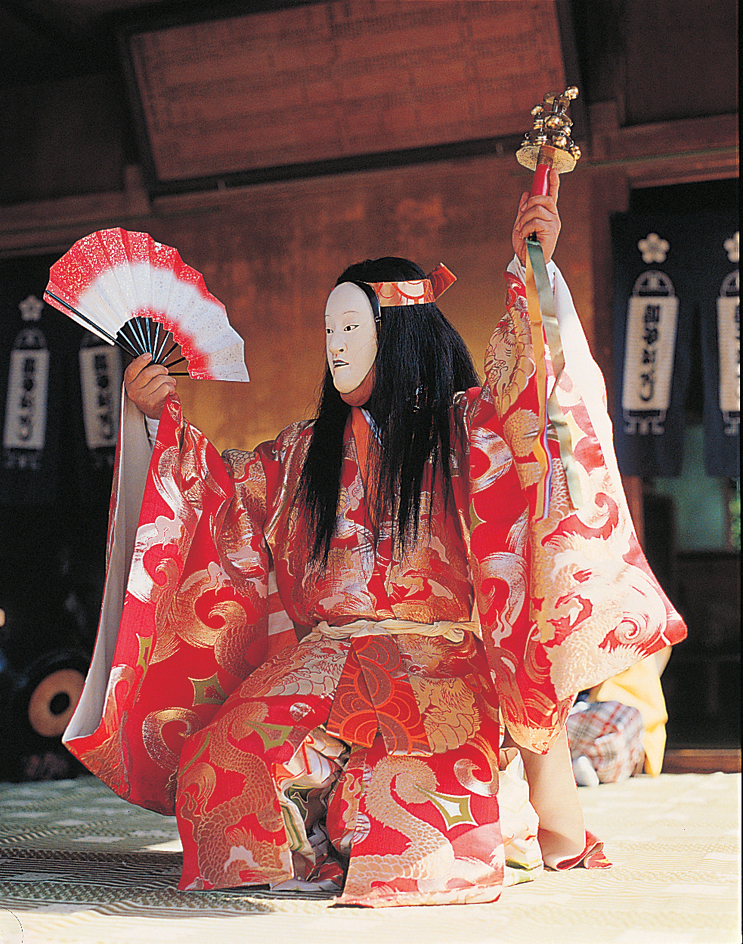
Japanese music has no harmony but makes use of microtones and free rhythm. The basic scales are the natural minor scale and a major scale with the fourth note raised a half step—for example, the C major scale with an F sharp instead of an F.
Indian music
is one of the few kinds of non-Western music that have become internationally popular. It first flourished in Hindu temples and the courts of the maharajahs (great kings) of India. A soloist sings or plucks a stringed instrument, such as the vina or the sitar. The soloist may be accompanied by a drummer and a musician playing a tambura, a lutelike instrument.
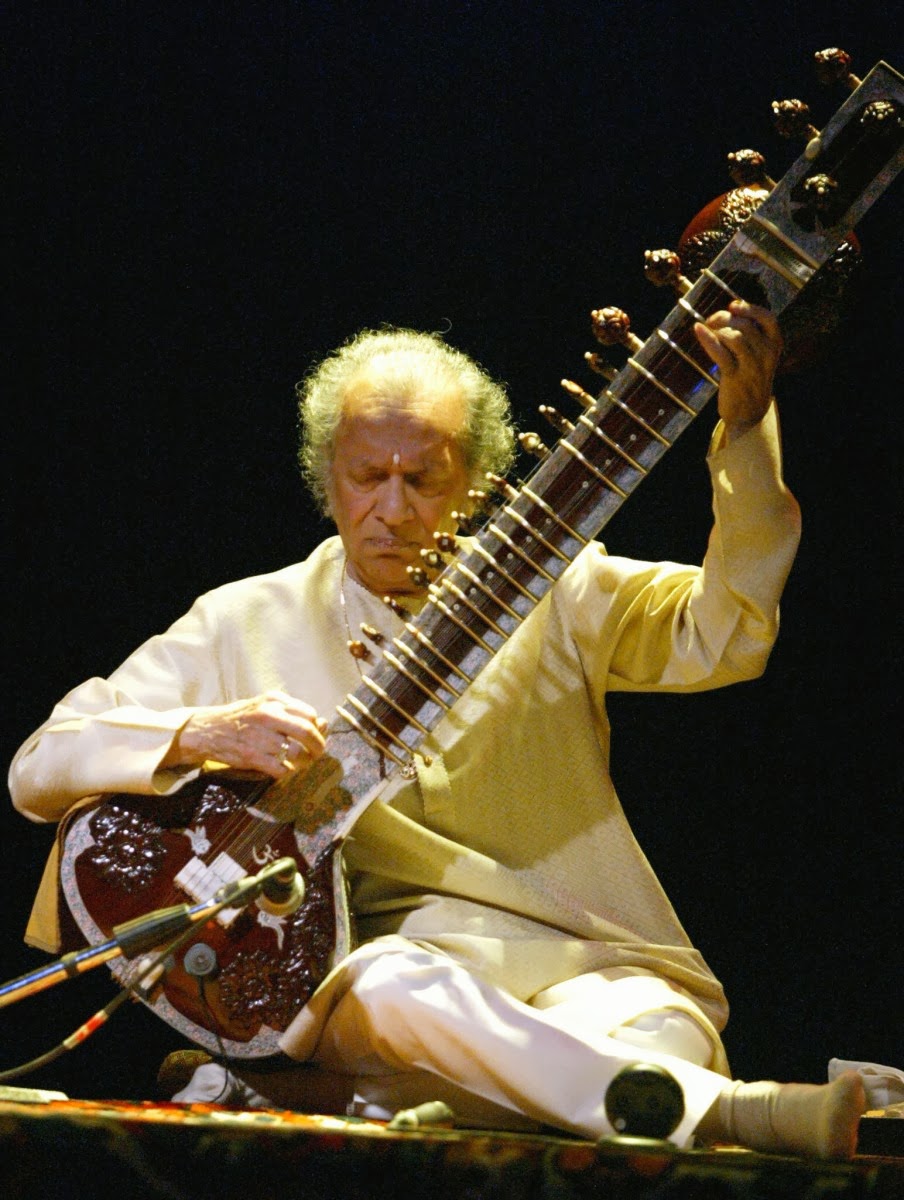
The notes of the Indian scale are arranged in various patterns called ragas. Each raga has a special meaning and may be associated with a particular mood, emotion, season, or time of day. The performer chooses an appropriate raga, plays it, and then improvises on it.
Loading the player...Indian folk song
Arab music
is the music of the Arabs of the Middle East and northern Africa. The main Arab instruments include flutes; drums; and two plucked stringed instruments, the oud and the qanun. Most Arab songs have instrumental accompaniment. However, musical instruments may not be used in Muslim worship. The chief Muslim religious music consists of calls to prayer sung by criers called muezzins and the chanting of passages from the Qur’ān, the sacred book of the Muslims.
Loading the player...Egyptian contemporary music
Indonesian music
is noted for orchestras called gamelans. These orchestras consist of drums, gongs, and xylophones and are used to accompany puppet plays. Gamelan music has a kind of harmony because the instruments play different melodies at the same time.
Loading the player...Indonesian ceremonial song
African music
is the music of peoples who live south of the Sahara. These peoples use music in almost every aspect of their lives, especially religious ceremonies, festivals, and social rituals. Many Africans believe that music serves as a link with the spirit world.
Loading the player...Zimbabwean traditional music
Drums are the most important instruments in African music. Some drums are made of animal skins and may be played with the fingers. Others consist of hollow logs that the performer beats with sticks. African musicians also play flutes, xylophones, and stringed instruments. One kind of instrument, called the sansa or mbira, consists of a number of metal strips attached to a piece of wood. The musician plays the instrument by plucking the strips with the fingers or thumbs.
Most African music features complex rhythms. The musicians create these rhythms by combining different patterns of beats played on drums and iron bells or produced by handclapping. Some African songs have harmony. In many songs, a leader sings a phrase and then the chorus repeats the phrase or sings a refrain. Elements of African music appear in jazz, spirituals, and the popular music of Brazil and the Caribbean.
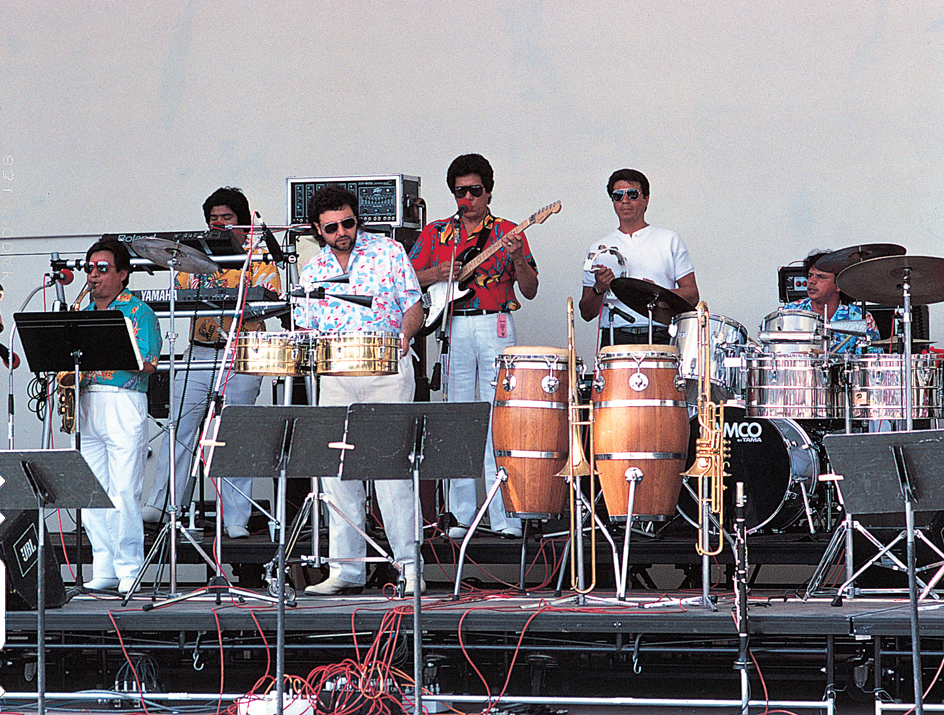
American Indian music
is the traditional music of the Indians of North and South America. Much of it developed before Europeans arrived in the Americas.
American Indians usually perform music as part of an activity. For example, music and dancing play an important part in Indian religious ceremonies and such tribal rituals as rain dances and hunting dances. Indian religious leaders called medicine men and medicine women sing songs as they treat the sick. The Indians also use songs in various social situations, such as courtship and trading. Many Indians compose their own songs. In the past, they said that they learned these songs from spirits that appeared to them in dreams.
Loading the player...Native American Pow-Wow
Much American Indian music consists of singing accompanied by drums or rattles. Much of this vocal music uses a five-note scale—A, C, D, F, G. Some Indian groups also perform flute music. In parts of Latin America, the music of the Indians mixed with the folk music of their Spanish conquerors. This mixture produced distinctive types of popular music and dance.
Careers in music
Careers in music provide many personal rewards. But such careers require talent and dedication. Only a person willing to devote a great deal of time to study and practice should consider a career in music.
A young person interested in a musical career should start lessons in school and with a private teacher. After finishing high school, the student should enroll in a conservatory (specialized music school) or study music at a college or university. In addition to formal lessons, the student should practice and study independently.
Many people who study music want to become professional performers or composers. But competition is keen among musicians, and relatively few earn a living solely by performing or composing. Careers in popular music are difficult to achieve and offer little security. A rock group that suddenly becomes popular may fall out of favor just as quickly. Musicians perform in orchestras or in small groups that play in theaters, nightclubs, and television studios. A few with exceptional talent give solo recitals or perform as soloists with orchestras or opera companies. Composers may work as songwriters or arrange music for TV shows and commercials.
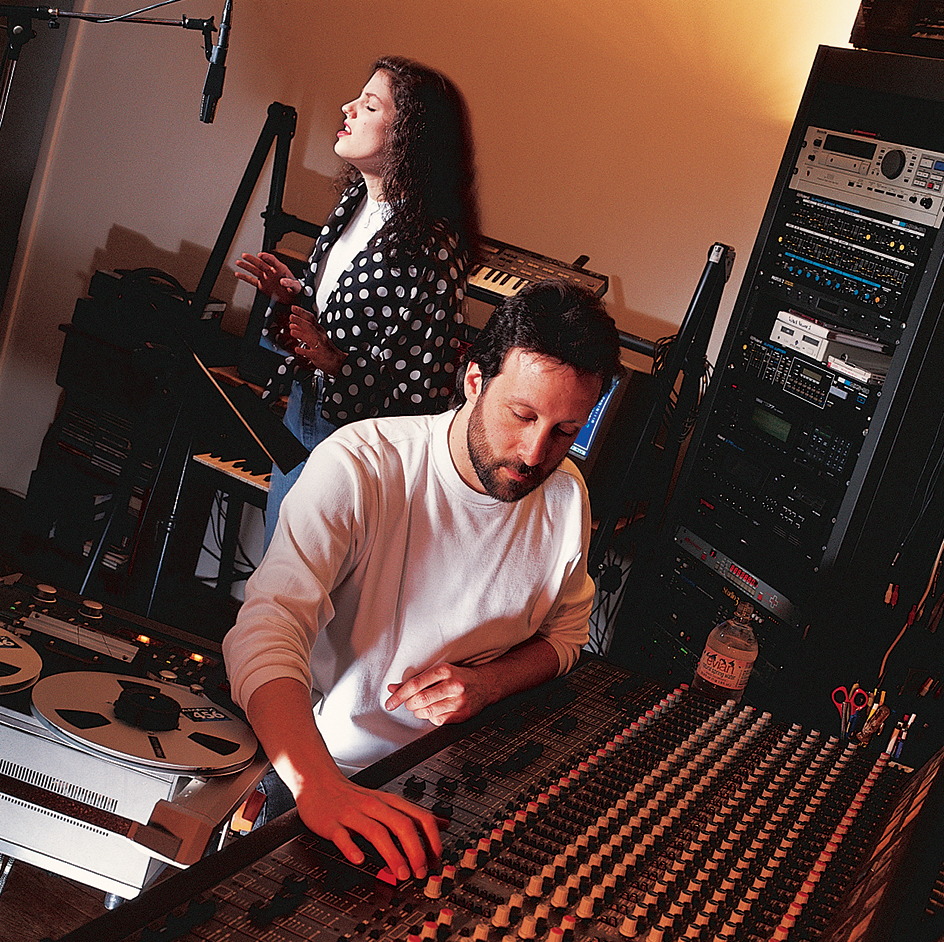
Teaching offers the largest number of career opportunities in music. Many composers and performers earn a living by teaching. Music teachers usually have at least a bachelor’s degree in music. Most college and university music teachers have advanced degrees.
Other jobs in the field of music include positions as church organists or choir directors. Music critics review performances for newspapers or magazines. Specialists called music therapists work with patients in hospitals and nursing homes. These musicians use music to arouse feelings that help patients get better. Many people make, repair, or sell musical instruments. Large musical organizations, such as symphony orchestras and opera companies, employ concert managers, librarians, secretaries, and other workers.
